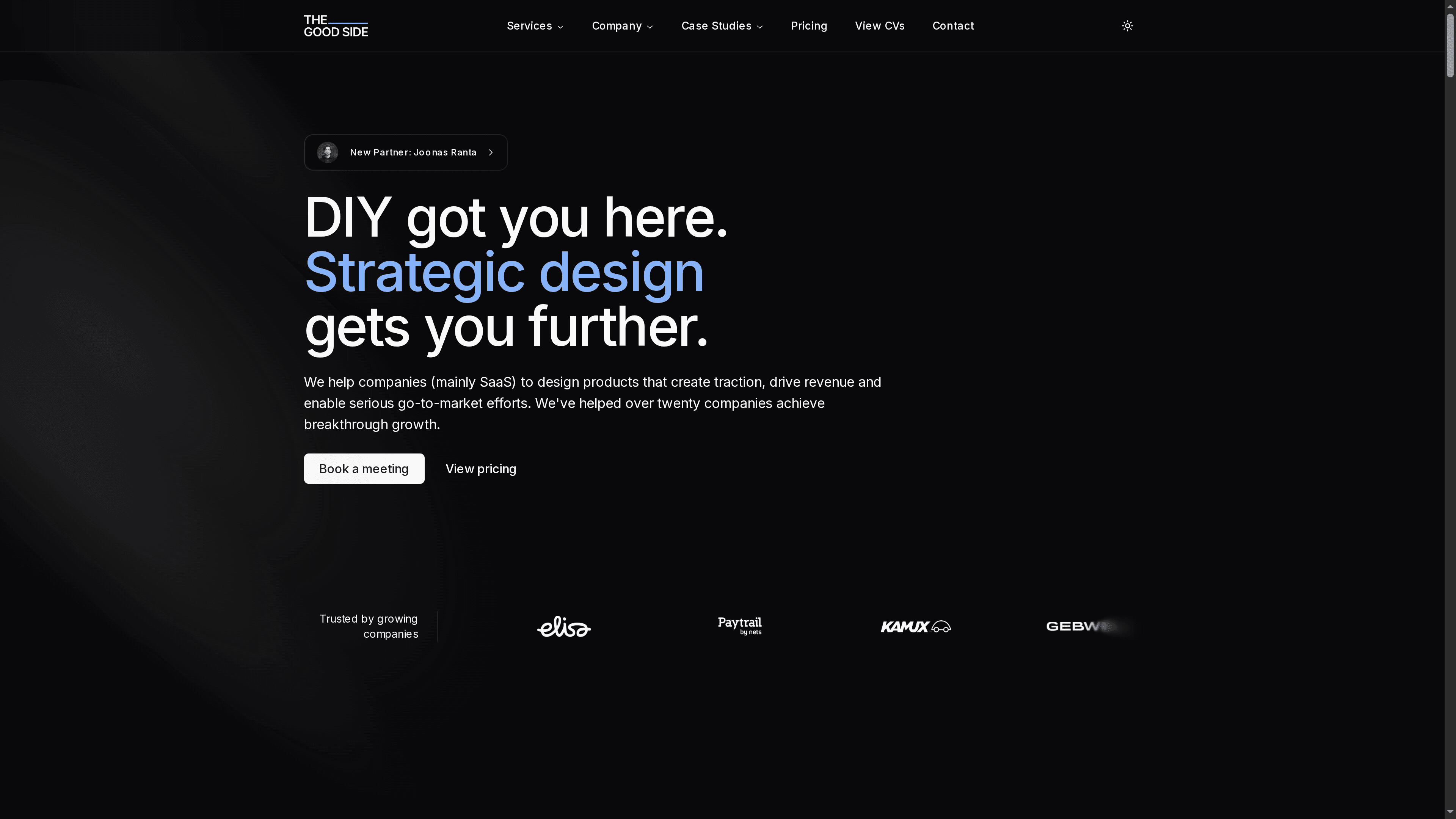The Essential Guide to UI in SaaS Conversion
Explore the role of UI in SaaS conversion with a comprehensive guide covering principles, best practices, measurable impact, and common design pitfalls to avoid.

Did you know that a well-designed user interface can increase SaaS conversion rates by up to 200 percent? In such a competitive industry, the look and feel of your software does far more than impress users. It silently directs attention, builds trust, and helps users move smoothly from curious visitors to loyal subscribers. When every click counts, even the smallest UI decision can directly shape your business growth and customer engagement.
Table of Contents
- Defining UI’s Role in SaaS Conversion
- Types of UI Elements Influencing Conversion
- SaaS User Journeys and Interface Touchpoints
- Measuring UI Impact on Conversion Rates
- Common UI Pitfalls That Lower SaaS Conversions
Key Takeaways
| Point | Details |
|---|---|
| UI as a Conversion Engine | Effective UI design serves as a critical tool for guiding users from exploration to active engagement, enhancing business outcomes. |
| Key Conversion Drivers | Prioritize clarity, simplicity, and guidance in UI design to improve user experience and support conversion rates. |
| Importance of Measurement | Tracking metrics such as click-through rates and user engagement helps gauge UI effectiveness and informs continuous improvement. |
| Avoiding Common Pitfalls | Simplifying design and ensuring mobile responsiveness can prevent user churn and enhance overall conversion potential. |
Defining UI’s Role in SaaS Conversion
User Interface (UI) design isn’t just about visual aesthetics—it’s a strategic conversion engine that transforms user interactions into measurable business outcomes. In the competitive SaaS landscape, your UI becomes the critical bridge between user curiosity and committed engagement.
At its core, UI conversion design operates through intentional visual and interactive elements that guide users seamlessly from initial exploration to active product adoption. This means every button placement, color choice, and interaction flow serves a deliberate conversion purpose. Think of UI as your silent sales representative, communicating value, reducing friction, and compelling users to take meaningful actions.
The most effective SaaS UI designs focus on three fundamental conversion drivers:
- Clarity: Instantly communicating product value
- Simplicity: Removing cognitive barriers to exploration
- Guidance: Creating intuitive paths toward key actions
By understanding UI design as a strategic growth driver, SaaS companies can transform their interfaces from mere visual experiences into powerful conversion mechanisms that directly impact user acquisition and retention rates.
Types of UI Elements Influencing Conversion
In the SaaS world, certain UI elements are conversion powerhouses that transform passive users into active customers. According to research from Capi Product, clear and consistent menu structures and prominent call-to-action buttons are critical in guiding user interactions and driving conversions.
Persuasive UI elements go beyond basic navigation. Conversion optimization research reveals powerful psychological triggers that can significantly boost engagement. These include:
- Scarcity indicators that create urgency
- Social proof like customer reviews and ratings
- Time-limited offer notifications
- Progress indicators that show users their journey
Responsive design emerges as a non-negotiable conversion factor. As research from Arbisoft indicates, mobile-first interfaces that adapt seamlessly across devices can dramatically improve user experience and conversion rates. Every pixel, button, and interaction must be strategically designed to reduce friction and guide users toward their desired action—transforming your UI from a mere interface into a conversion-driving machine.

Here’s a breakdown of core UI elements and their conversion-driving effects:
| UI Element | Conversion Driver | Description |
|---|---|---|
| Call-to-Action Buttons | Guidance Clarity |
Prompts users to key actions |
| Menu Structure | Simplicity | Eases discovery, reduces friction |
| Scarcity/Offer Notices | Urgency | Boosts engagement, action speed |
| Social Proof (Reviews) | Trust | Reduces hesitation to convert |
| Mobile Responsiveness | Accessibility Ease |
Improves experience on devices |
| Progress Indicators | Motivation | Keeps users progressing forward |
SaaS User Journeys and Interface Touchpoints
A user journey in SaaS is more than a linear path—it’s a strategic narrative that guides potential customers from initial curiosity to committed engagement. According to research from CodeBridge Tech, simplifying navigation through clear menu structures and implementing breadcrumbs can dramatically enhance user experience and conversion potential.
Interface touchpoints represent critical moments of interaction where users decide whether to continue or abandon their journey. These pivotal points include:
- Landing pages that make first impressions
- Onboarding flows that demonstrate product value
- Feature discovery interfaces
- Support and help sections
- Upgrade and conversion prompts
As user experience research suggests, a smooth and intuitive journey reduces cognitive load and guides users naturally toward conversion points. Each touchpoint must be strategically designed to minimize friction, provide clear value, and create a sense of progressive momentum that feels effortless and compelling. The goal is transforming complex interactions into an intuitive, almost invisible experience that anticipates and meets user needs before they even articulate them.
Measuring UI Impact on Conversion Rates
Conversion rate measurement transforms UI design from an aesthetic exercise into a strategic business lever. According to research from Senna Labs, a well-designed user interface can dramatically increase conversion rates by up to 200%, with exceptional UX design potentially driving improvements as high as 400%.
To effectively measure UI’s impact, SaaS companies should track these critical metrics:
- Signup completion rates
- Time spent on key pages
- Click-through rates on primary CTAs
- User drop-off points
- Feature adoption speed
While numbers tell part of the story, conversion optimization strategies reveal the nuanced relationship between interface design and user behavior. Every interaction represents a potential conversion moment—from homepage hierarchy to pricing page layout. The goal isn’t just collecting data, but understanding how each design element guides users from curious visitors to committed subscribers. By combining quantitative metrics with qualitative user insights, SaaS teams can continuously refine their interfaces to create smoother, more compelling user experiences that naturally drive conversion.
Common UI Pitfalls That Lower SaaS Conversions
SaaS interfaces can unintentionally sabotage conversion potential through seemingly minor design mistakes. According to research from Helix Beat, information overload represents one of the most critical UI pitfalls, where overwhelming first-time users with excessive options and complex interfaces can dramatically increase user churn.
The most damaging UI design mistakes include:
- Cluttered navigation that confuses user pathways
- Inconsistent design elements that create visual noise
- Hidden or unclear call-to-action buttons
- Non-responsive mobile interfaces
- Excessive form fields during signup processes
Simplifying user interface design is about strategic subtraction, not addition. Mobile responsiveness emerges as a critical conversion factor—research indicates that slow or broken mobile experiences can devastate user trust and engagement. Successful SaaS interfaces anticipate user needs, eliminate unnecessary complexity, and create intuitive paths that guide users effortlessly from curiosity to commitment. Every design choice should serve a clear purpose: reducing friction and making the user’s journey feel natural and compelling.
Unlock Higher SaaS Conversions with Expert UI Design
The article highlights common UI challenges such as cluttered navigation, unclear call-to-actions, and mobile unresponsiveness that undermine SaaS conversion rates. If your product struggles with confusing user journeys, lack of clarity, or poor interface guidance, you are not alone. These issues create friction that discourages users from advancing along their journey to activation and subscription.
Imagine turning your UI into a strategic growth engine that drives clearer user paths, reduces hesitation, and boosts conversion rates by up to 200 percent or more. At The Good Side, we specialize in transforming disconnected and underperforming SaaS interfaces into cohesive, user-focused experiences. Our senior SaaS designers focus on simplicity, clarity, and intuitive guidance that resonates with your customers. We deliver tailored UI/UX design, user research, and full user journey optimization designed to turn casual visitors into engaged, loyal users.
Ready to break down barriers and guide your users seamlessly from curiosity to commitment?
Elevate your SaaS product with a proven partner who understands how every interface element impacts conversions. Start with a free design audit to identify hidden friction points, then rapidly integrate expert design talent that accelerates your go-to-market success.
Explore how intentional UI can multiply your impact with The Good Side today.
Transform your SaaS UI now and experience the difference a strategic design partner can make.

Take the first step toward high-performing SaaS interfaces that engage, convert, and retain. Visit The Good Side and start your free design audit to unlock your product’s full potential.
Frequently Asked Questions
What is the role of UI in SaaS conversion?
UI plays a crucial role in SaaS conversion by serving as a strategic design element that guides users from exploration to engagement. Effective UI communicates product value, simplifies navigation, and creates pathways that encourage user actions.
What are the key UI elements that drive conversions in SaaS?
Key UI elements that drive conversions include call-to-action buttons, clear menu structures, scarcity indicators, social proof, mobile responsiveness, and progress indicators. Each element is designed to enhance user experience and foster engagement with the product.
How do user journeys impact SaaS conversions?
User journeys impact SaaS conversions by mapping out the sequence of interactions a user has with the product. Each touchpoint should be intuitively designed to minimize friction and progressively lead the user towards key actions such as signups or upgrades.
What are common UI pitfalls to avoid for improving conversion rates?
Common UI pitfalls include cluttered navigation, inconsistent design elements, unclear call-to-action buttons, lack of mobile responsiveness, and excessive form fields. Avoiding these mistakes can enhance user experience and increase conversion potential.